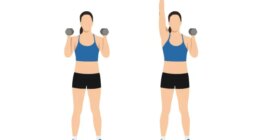Fish burgers. Pineapple iced doughnuts. Spicy beef wonton soup. Vanilla marshmallows. Anchovies. KFC potato and gravy. Cookie dough ice-cream. Lemons. Talcum powder. Ice. Dirt.
These seemingly random – yet strangely specific – sweet, salty, spicy, cold and just out-there freaky tastes are some of the things craved during pregnancies.
While a majority – as many as 90% – of pregnant people experience at least one food craving during pregnancy, most commonly in the first trimester, relatively little is known about why. There are likely cultural differences, with studies suggesting pregnant women in Nigeria are more likely to crave fruits and vegetables, while women in the US hanker for chocolate.
Among the baffling variety of cravings, which include the oft-quoted pickles and ice-cream, there are some trends.
Melanie McGrice, a prenatal dietitian based in Melbourne, says a common pregnancy craving is for salty foods, which, perhaps counterintuitively, can be a sign that women aren’t drinking enough water.
“During pregnancy, our fluid requirements increase by about 150%,” she says, noting the overall volume of blood in the body increases by 45% during pregnancy. “Yet most women’s fluid intake does not increase.”
When we eat more salty foods the body retains more water, but McGrice says that’s not a good thing. “The ideal solution is to do the opposite and actually just drink more water,” she says.
Another common craving is cold, sweet foods such as ice-cream and milkshakes, and foods that are high in carbohydrates. That can be a response to fluctuating blood sugar levels, which happen even in women without diabetes.
But milkshake and ice-cream cravings could also signify a need for calcium, says Lora Attia, a fertility and prenatal dietitian. Pregnancy actually boosts the ability to absorb calcium from food, so pregnant people don’t necessarily need a higher intake, but they do need a healthy intake – about 1,300mg a day for people aged 18 or under and 1,000mg a day for those aged 19-50.
“We know lots of women will crave ice-cream, for example, and they might be thinking, ‘Oh, my body needs calcium’, but that’s not a great source of calcium,” Attia says. Half a cup of ice-cream has about 78mg of calcium, while the same volume of tofu has 160mg of calcium. “But I haven’t had that in practice, where they’re reaching for tofu for calcium.”
McGrice suggests instead of the milkshake just go for milk, which has all the benefits of calcium, coldness and a low glycaemic index, without the sugar.
Another common craving – one that can come as an unpleasant surprise to pregnant vegetarians and vegans – is red meat. Again, this can be the body signalling a need for a particular nutrient – in this case, iron. “We’ll often have those conversations,” McGrice says. “Do they want to just try and boost their iron intake naturally and we can work on it that way, or do they want to have some red meat during pregnancy?”
Cravings for things that aren’t food
Iron deficiency can sometimes drive more extreme and unexplainable cravings, such as chalk, ice or dirt. This phenomenon is called pica – a name derived from the Latin name for the magpie, in a nod to the bird’s strange collecting habits – is estimated to affect up to 4% of women in pregnancy and refers specifically to craving substances that have no nutritional value. There is some evidence that it is associated with iron deficiency, but that doesn’t necessarily explain why the cravings are for substances that aren’t high in iron. Pica cravings are not exclusive to pregnant women, suggesting other factors may be at play.
Associate professor Allison Cummins, a midwifery researcher at the University of Newcastle, says pregnancy cravings are definitely more intense than the usual hunger for particular foods we experience day to day. Cummins experienced an almost overwhelming craving for ice during her own pregnancy.
“I was working in midwifery practice, and the woman would be in labour and she’d have a glass full of ice there, and as soon as she shut her eyes to have a contraction, I would eat her ice,” she recalls.
While it’s OK to succumb to cravings in moderation, Cummins cautions against the “eating for two” mentality. “Women are very capable of growing a baby, so you don’t need to eat for two,” she says. Giving in to cravings for high-sugar, high-fat and high-carb foods not only increases the risk of weight gain and gestational diabetes, but it can also increase the weight of the baby and have long-term effects on their metabolism.
Eating a healthy diet in pregnancy is important, for mother and baby, but Attia acknowledges it can be tough, particularly because of cravings and food aversions.
“Lots of women think when they become pregnant they’re going to eat so healthily and eat well, they have these big plans,” she says.
“But you don’t know the symptoms and the side effects you’re going to go through in pregnancy, and that can make it difficult to eat well.”





